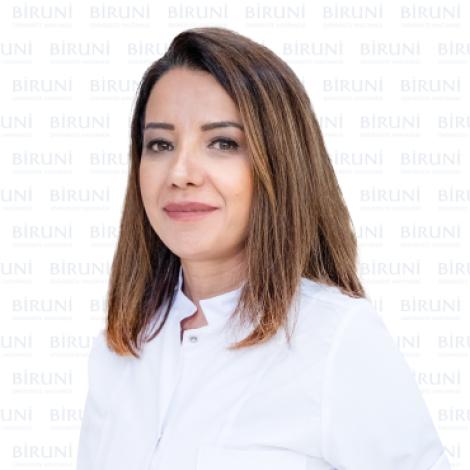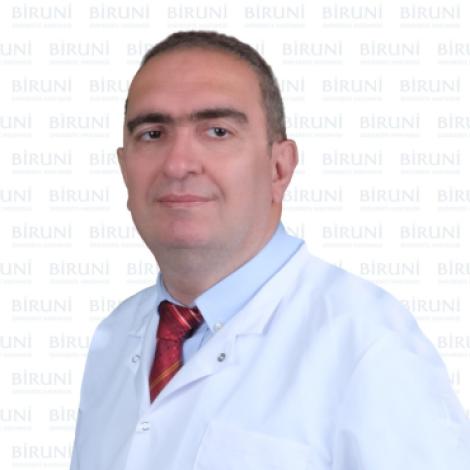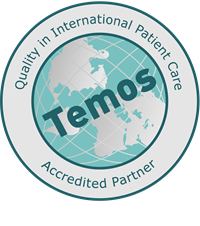Interventional Neurology
Treatment of Cerebrovascular Diseases
Interventional Neurology is a groundbreaking, minimally invasive approach to treating cerebrovascular diseases. The procedures performed in this field are conducted intravascularly without open surgical incisions or tissue injuries, also known as "closed brain vessel surgery" among the public. This method allows real-time monitoring of all diagnostic and treatment stages on device screens while reducing infection risk to negligible levels. Additionally, unlike open surgery, there's no need to cut surrounding tissues to access the target vessel.
Interventional Neurology offers solutions for various cerebrovascular problems. The main cerebrovascular diseases treated with this method include:
- Aneurysm treatment
- Arteriovenous Malformation (AVM) and Arteriovenous Fistula (AVF) treatment
- Carotid artery and brain/neck vessel stenosis treatment
- Clot (Stroke) treatment
- Treatment of vasospasm after brain hemorrhage
- Adjuvant treatment for brain and spinal cord tumors

Stroke Treatment
Stroke is a medical emergency resulting from blocked or ruptured brain vessels, causing temporary or permanent loss of function in brain regions. Time is critical in stroke treatment; early intervention can prevent permanent damage.
- Ischemic Stroke (Due to Blockage) Treatment: Thrombolytic drugs (tPA) dissolve blood clots in brain vessels, with critical importance of administration as soon as possible after symptom onset (within first 4.5 hours). For large vessel occlusions, mechanical thrombectomy - an angiographic method using stents and/or catheters to remove clots - is performed. Earlier mechanical thrombectomy yields better outcomes, ideally within 6 hours of symptom onset (up to 24 hours in selected patients).
- Hemorrhagic Stroke (Due to Bleeding) Treatment: Treatment plan depends on location, size of hemorrhage and underlying cause. Controlling bleeding and reducing intracranial pressure through blood pressure management is essential. Surgical intervention may be needed to remove blood clots, repair ruptured vessels or relieve brain pressure.
Carotid Stent
Carotid arteries, commonly known as "carotid arteries," are the most important arteries supplying oxygen and nutrients to the brain. Carotid artery stenosis is the narrowing of these vessels due to plaque buildup, significantly increasing stroke risk.
Carotid stenting is a minimally invasive method used to treat carotid narrowing, aiming to prevent stroke. This procedure is primarily performed on patients with >50% stenosis who have experienced stroke or mini-stroke symptoms, as well as asymptomatic patients with ≥70% occlusion who are at high stroke risk. It's particularly suitable for high-risk surgical candidates.
The procedure typically begins with a small incision in groin or arm vessels (femoral, brachial or radial artery) for catheter insertion. The catheter is advanced to the narrowed area where a stent opens the vessel. If needed, a balloon may be inflated within the stent to further widen the narrowing. Protective filters are usually employed to prevent clot migration to the brain. Carotid stenting offers advantages like being less invasive, requiring no major surgical incision, reduced risk of nerve damage in the neck, and faster recovery. However, risks include stroke, bleeding, restenosis (re-narrowing within stent) and temporary headache. Patients typically resume daily activities after one night hospitalization and require blood thinners for a certain period.
Vertebral Stent
Vertebral arteries are arteries located in the back of the neck that supply blood to posterior brain regions. Vertebral artery stenosis is the narrowing of these vessels due to plaque buildup, which may increase stroke risk. Vertebral artery dissection (VAD) involves a tear in the artery's inner lining and is a leading cause of stroke in young adults under 50.
Vertebral stenting is an interventional method used to treat vertebral artery stenosis and dissection. Particularly for symptomatic vertebral artery stenosis cases where medical therapy proves insufficient, endovascular revascularization (stenting) offers an attractive treatment option.
The procedure typically begins with catheter insertion through groin (femoral artery) or arm. Under fluoroscopic guidance, the catheter is advanced to the narrowed vertebral artery. Upon reaching the stenosis, a small balloon on the catheter is inflated to widen the vessel (angioplasty), followed by permanent metal stent placement to maintain vessel patency.
While generally safe, vertebral stenting carries risks including stroke, bleeding/hematoma (at access site), in-stent restenosis, temporary headache/dizziness, vessel injury, and clot formation. Percutaneous angioplasty and stenting is considered a safe, effective and beneficial technique for treating extracranial vertebral artery stenosis to relieve symptoms and improve posterior circulation blood flow. In experienced hands, stenting for symptomatic vertebral artery stenosis can be performed with very high success rates and few peri-procedural complications.

Aneurysm
Aneurysm refers to ballooning or widening at a weak point in an artery wall. Brain aneurysm is a serious condition where weakened areas in brain vessel walls bulge outward. These bulges typically occur in critical areas like the brain, heart and major arteries.
Most aneurysms, especially small ones, remain asymptomatic until rupture or growth causes pressure on surrounding tissues. The hallmark symptom of ruptured aneurysm is sudden, extremely severe headache, often described by patients as "the worst headache of my life." Accompanying symptoms may include nausea, vomiting, neck stiffness, blurred/double vision, light sensitivity, loss of consciousness or seizures.
Sudden severe headache warrants serious consideration of brain aneurysm possibility. Diagnostic process includes imaging (brain CT, MRI) and cerebral angiography (DSA).
Brain aneurysm treatment depends on multiple factors including size, location, rupture risk and patient's overall health. Ruptured aneurysms require emergency intervention, while prophylactic treatment may be considered for high-risk unruptured aneurysms.
- Surgical Clipping: Neurosurgeons open part of the skull to place a metal clip on the aneurysm neck, stopping blood flow. This permanently eliminates rupture risk.
- Endovascular Coiling: Less invasive procedure without skull opening. Catheter is inserted through groin or wrist artery to place platinum coils in the aneurysm, forming a mass that blocks blood flow and promotes clotting.
- Flow-Diverting Stents: Relatively new endovascular method for large/complex aneurysms. Special stent placed across aneurysm neck diverts blood flow away from aneurysm, eventually causing it to clot and shrink.
Aneurysm coiling is considered quite safe and effective for unruptured aneurysms. However, ruptured aneurysm treatment remains high-risk.
Stem Cell
Stem cells are basic human cells capable of differentiating into various mature cell types and self-renewal. These special cells can help repair damaged tissues and potentially generate healthy new tissues. Stem cell therapy represents a groundbreaking treatment method in regenerative medicine. Stem cells can be obtained from various sources including bone marrow, adipose tissue, cord blood, placenta and amniotic fluid.
Stem cell therapy shows promise as an innovative approach to repair brain and nerve tissue damage after stroke. Therapeutic effects of stem cells in brain injury are complex and multifaceted:
- Neuroprotection and Neuroregeneration: Can repair or regenerate damaged brain cells, protecting existing neurons through secretion of various neurotrophic factors and cytokines.
- Angiogenesis (New Vessel Formation): Promotes new capillary formation to improve cerebral blood flow and oxygen delivery.
- Anti-inflammatory Effect: Reduces inflammation and edema to enhance brain recovery environment.
- Supporting Neuroplasticity: Enhances brain's reorganization and recovery capacity, improving cognitive and motor functions.
- Damaged Cell Repair/Regeneration: Can replace lost or damaged cells and repair tissue damage elsewhere in the body.
Stem cell therapy involves processing patient-derived stem cells in laboratory before injection into damaged brain areas. Cells may be delivered intravenously or directly to damaged organs. Performed under local anesthesia, patients typically recover quickly and resume daily activities. While still in clinical trials, preclinical studies and meta-analyses show promising results. The optimal window for stem cell administration post-stroke appears to be 36-72 hours. When carefully planned, stem cell therapy is generally considered safe though potential risks include infection, bleeding or allergic reactions. Clinical trials haven't shown significant differences in serious side effects or mortality rates. Ongoing innovations in stem cell therapy hold great promise for stroke patients, with more effective methods and advanced techniques potentially making this treatment more widespread in future.
Unit Doctors

Prof. Dr. Demet Funda BAŞ

